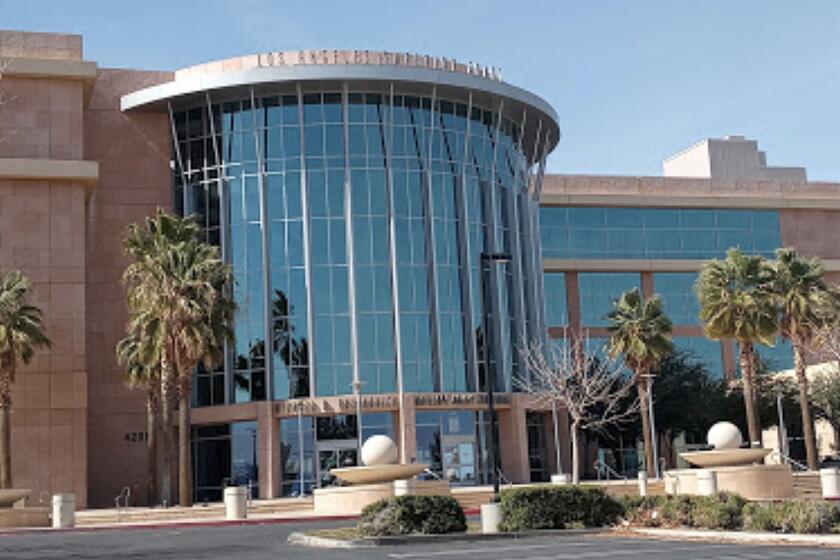Santa Clarita Cityhood Still a Long Way From Reality
- Share via
More than a year after the beginning of a drive to forge a city from five unincorporated communities in the Santa Clarita Valley, backers of the cityhood movement can be sure of only one thing.
The city of Santa Clarita, if approved by the Los Angeles County Local Agency Formation Commission, will be somewhat smaller than the 95 square miles envisioned in the original plan.
“We recognize that we absolutely must give up some territory,” said Carl Boyer III, chairman of the Santa Clarita City Formation Committee, after Wednesday’s public hearing before the commission. But just how much territory the committee will be forced to give up--or how much they will be willing to relinquish--remains to be seen.
Large undeveloped portions of land within the boundaries proposed by the cityhood committee make the larger city financially unfeasible, according to a report by LAFCO Executive Director Ruth Benell. For example, the city, as proposed, would have to pay almost $2 million annually to the county’s Consolidated Fire Protection District for protection of the undeveloped land, Benell said.
Benell predicted an annual $4.4 million budget deficit for the city.
Figures Disputed
However, Boyer said these figures can be disputed because a large part of the area in question will be developed by the time the new city becomes a reality.
Benell recommended, among other things, that the community of Castaic and portions of Valencia and Newhall west of the Golden State Freeway be excluded from the proposed city. The two other communities included in the proposal, Canyon Country and Saugus, remain intact in Benell’s redrawn boundary lines.
Although commission members did not adopt the boundary lines recommended by Benell, they did express concern about the size of the proposed city and the predicted budget deficit. They instructed cityhood committee members to come back to them April 22 with alternatives.
“Let’s cut it down and see if it’s really viable,”’ said Commissioner Henri F. Pellissier. Since residents of the area have attempted twice to form their own county, he said he hopes the boundaries can be adjusted so a city of some size can be started.
Areas now included in boundaries drawn by the cityhood committee can always be annexed to the city later, he said, after they have been developed. With construction of more than 37,500 residential units in various stages of the county permit process, developers have said they fear a new city government would place a moratorium on growth.
“This is not a stop-growth effort,” said Connie Worden, cityhood committee vice chairman.
If all the residential units on the drawing boards are built, county planners have predicted that the community’s 106,000 population will grow to about 266,000 by 2010.
Drawing Up Alternatives
Worden said the committee will present several alternative boundaries to LAFCO on April 22. Members of the cityhood committee have hired an accounting firm to prepare more detailed budget studies and an attorney to advise them on incorporation law, she said.
Worden and other cityhood leaders said they are reluctant to give up Castaic. The communities in the proposed city have “a unique Valleywide community spirit,” Worden said. “We’re one community defined by two freeways.”
She said that a majority of the approximately 1,000 Castaic residents have signed petitions asking that LAFCO allow their community to remain within the proposed city’s boundaries.
Boyer said the cityhood group especially wants to retain the Magic Mountain amusement park and other commercial areas west of the Golden State Freeway. The park, with 3,000 employees, is the Santa Clarita Valley’s largest employer, he said, and sales and property taxes generated by the park are important revenue sources for the new city.
Ballot Date Uncertain
In addition to the proposed city’s eventual size, another point remains unclear--the date the cityhood proposal will be submitted to voters. Cityhood leaders had aimed for the Nov. 4 ballot this year. But LAFCO chairman Kenneth I. Chappell predicted no decision on the cityhood proposal will be made April 22 or in time for the November ballot.
“This is too important to rush through,” he said.
Benell said the Board of Supervisors, which must also rule on the proposal, would have to call the election on or before Aug. 7 in order for it to appear on the November ballot.
More to Read
Sign up for Essential California
The most important California stories and recommendations in your inbox every morning.
You may occasionally receive promotional content from the Los Angeles Times.










